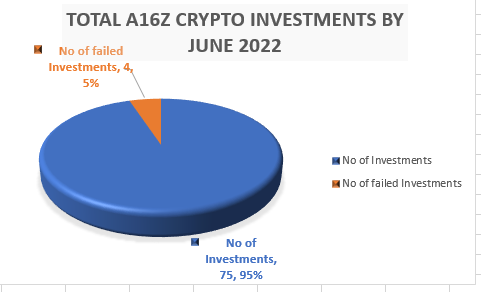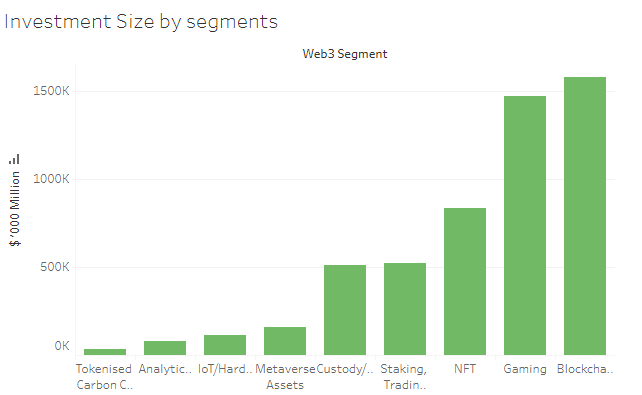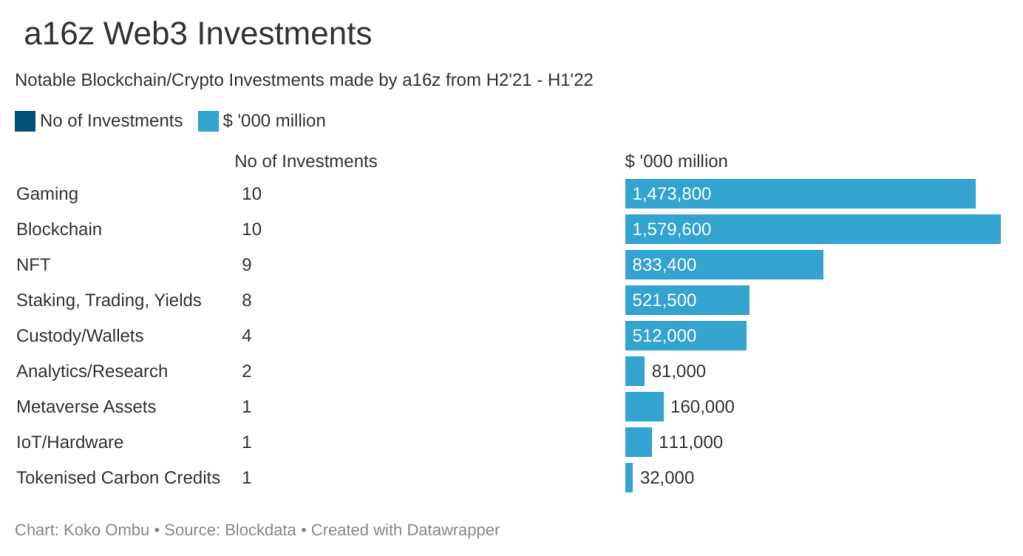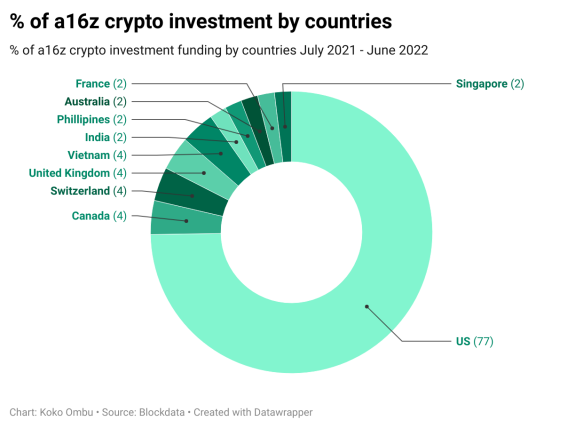What’s all the rave about tech startups? At every turn, and almost every where you look, you see a new launch, a new venture backed tech startup, and a whole lot of hoopla about startup founders. You’ve thought about how tech startups come to be, and are probably wondering how to start one. Starting one is definitely a great idea and this article will take you through how to achieve this, even if you know next to nothing about tech.
In this article, you will learn what it takes to start or launch a tech startup. The following subtopics are included:
- Tech is all around you
- Anyone can have a tech startup
- Anyone can have an idea
- Tech can influence your idea
- Tech as a business
- How to start a tech startup without being techie
- Do we start?

If you are very quizzical because you know next to nothing about tech (which I very much doubt – I’ll get back to this later) you may be asking how. Why start a tech startup to make more money? Why not start any other business? Well, starting any other business is awesome; it is great and would definitely bring your senses to life as you try to activate the goals of the business. But when it comes to tech, there are many, many reasons why you should be opting for it, or even feel inspired to start one.
Now, you may be going, “But I know absolutely nothing about tech, how on earth am I going to start a tech startup?” The truth is that you do not know absolutely nothing about tech, you know quite a handful about tech for the following reason;
Tech is all around you
Look all around you, and you will see tech. From gadgets like your home appliances, media hardware, computers, phones, the apps that control them, tech is all around you. And you know what? You use these valuables every single day. They are part and parcel of your life and for some people; they are second nature as they can hardly do without one form of tech or the other running the daily activities of their waking moments. From going, “How does this app work anyways?” most people move to, “I can show you how that works.” While a few outliers will swear off tech, outside influences beyond their control ensure they remain part of the tech ecosystem and growing knowledge whether they like it or not – like think of the ‘big brothers’ of the world trying to keep you safe, that you can literally do nothing about and you will catch my drift.
Having established that indeed you are not all dumb on tech, let us progress on how you can start a tech startup with the following points;
Anyone can have a tech startup
Anyone can have a tech startup and I mean absolutely anyone, and now that is even without being techie. It is usual for us to look at being techie with the world’s definition of a nerd – that person who stays indoors, is married to his or her computer, talks little to every other person, has one or two friends and collectively, they spend their time writing code. Trust me, that is a very poor definition about being techie. Yes, it is quite normal for a techie person to love computers but there is more, oh, so much more to this. Having a tech startup is about having an idea you can integrate into all the functionalities of tech, it is that simple. Instead of having an idea and treating it just like any other idea, it is as simple as treating it like a tech idea, fitting it into the perspective of a tech based business model and seeing how it evolves from there.
Anyone can have an idea
Have you ever had an idea before? Well, having ideas is a very common thing. We all have them and they are the seeds to products we buy off mall shelves, programmes we watch on TV, items and gadgets we love, the games we play etc. I mean, ideas are everywhere and they fall on everyone. I want you to have a vivid picture in your mind of a large number of people walking under the rain? So imagine them for a few seconds. This is a recurrent sight so it should be very easy. Now, imagine this same scenario but with the rain drops falling like idea bulbs. The truth is we are all living under a massive cloud of ideas as our God-given right and men, do they fall on the head of every human. It is what we do with the ideas that fall on us that count. So as long as we have ideas, are receptive to them and are able to determine its integration into the functionalities of tech, we can start a tech startup. In fact, anyone can and here’s why.
Tech can influence your idea
Tech can influence an idea that seems like a plain Jane and turn it to something extraordinary. We have seen this happen with some of the largest tech startups in the world – a simple idea like connecting friends turning into a $500 billion dollar business, a la carte, Facebook. Or a simple chat idea being transformed into something even technology terms simple to recreate, Whatsapp. In the words of Mark Zuckerberg himself to the Whatsapp founder Jan Koum, “Whatsapp has a simple use case”, meaning, you use it without giving it a darn thought, you just use it as a seamless form of communication to your buddy wherever, whenever. Now, because these ideas have become gigantic corporations, we tend to fool ourselves that they are outstanding. No, they are not outstanding as ideas but have become madly outstanding with the tech behind the idea, propelling them to something really, really enormous. In reality, there are not many ideas you can liken to a tech idea but there are many ideas done in a tech driven way.
Here are some examples of the simplest ideas that have turned into tech startups. I want you to intuitively think about them and then, imagine what is possible with what you may presently consider as not even an average idea.
- Willing
I remember the very first time I heard of the startup idea, willing.com, it had just won a chance to be on the famous accelerator programme, Y Combinator, achieving this with such a straight forward idea you would most likely toss in the bin if you thought about it – protect your family and property with a legally valid will. Common, can’t you get that from any solicitor on the street? What is so techie about that? In just three years, Willing.com has been funded to the tune of $7.12 million dollars by investors.
Huh? Yeah, huh! For a crazily simple idea as this, you never know what this world is going to give until you look very well at what’s really out there and maybe, take them to heart. For God’s sakes even amongst solicitors and lawyers, this is just a sub sect of what lawyers have to deal with, and could be easily brushed aside as one which cannot turn out to be the proverbial ‘cash cow’. But with his torturous experience trying to get his brain tumour ridden Aunt’s affair in order, a thought flashed into the head of Eliam Medina, “Can’t the process of making a Will be less complicated, less expensive and less time consuming?” This singular thought was the birth of a simple idea from someone with no legal or tech background whatsoever – Wills in 15 minutes and for absolutely free.
- Eventbrite
What was the thought behind this idea? ‘If people could find when events would happen, they could get tickets cheaper than what they are getting them for’. This was the birth of Eventbrite by husband and wife duo Julia and Kevin Hart, which is today, the world’s largest event posting and ticketing company. Where they previously working in ticketing? No, just concern about where events happened and ridiculous ticket price tags.
- H Bloom
Bryan Burkhart founded H Bloom out of the nervousness, inquisitiveness and research he forayed into trying to create something unique for the tech industry. His first idea, Flowers! He thought the flower industry lacked tech innovation. Flowers, lack tech innovation, can you believe that? Why should fresh flowers have anything to do with tech? Was this guy even a florist? No, he wasn’t.
- Joor
‘Why can’t small stores easily stock high end designer clothing?’ was the thought which set up the process of creating Joor. The simple idea behind the startup – find a way to connect big fashion brands to buyers created by Mona Bijoor. Joor has become a wholesale marketplace for small fashion stores to purchase and stock the biggest brands seamlessly.
- ZocDoc
Finding a Doctor was cumbersome after a cross-country flight which caused the ZocDoc founder a burst eardrum, leaving him to search for a Doctor for four days, and the idea? There should be a way to access Doctors for specific needs with a lot less stress.
- Skillshare
You are a teacher, if anyone can listen to you. This was the idea behind SkillShare which has a goal of turning every address into a classroom.
Ideas can come when you are looking and a lot of times, when you are not looking at all and those sampled above are simple ideas, aren’t they? All these simple ideas were launched as tech startups, though they could have been plied as normal everyday businesses. This goes to show that anybody like you can have a simple idea which can be translated into a tech startup, all you need to be is always receptive to the things going on around you.
But what is their connection to tech, is the question?
Can you just put these simple ideas in a tech startup machine shake as hard as you can and voila! Out jumps a tech startup. Is it that easy? Well, let’s find out.
Tech as a Business
In this context, we focus on tech as businesses propelled by the global surge in internet use. So a tech startup as a business entity is one whose founders choose to trade their ideas with the use of the internet as a base model or channel for the distribution of their services.
In this regard, an ordinary idea is transformed into a tech startup by utilising tech’s functionality to drive it no matter how small the idea may seem. These functionalities include;
- Web: The number one tool driving the digital world is the internet. And the use of the internet as a free distribution channel is the base for online businesses which could be largely termed as tech startups.
- Infrastructure: The development of a software, website or application on a purchased domain name e.g. shoes.com, and hosted on the web.
- Viable Idea: An idea possessing a visible marketplace need validated by a distinctive target market that is ready to pay for it is a viable idea. This idea should at least be in the form of a minimum viable product in terms of its infrastructure workability which means the smallest product or service version of what can be sold to clients in exchange for their money.
- Innovation: Your idea should provide an innovative solution to your target market who will be delighted to opt for your service as a result of a certain value proposition which may come in form of ease of use, cost effective, convenience etc.
- Global Reach: The ability to serve global markets (from China to Guinea, Madagascar to Bangladesh) with ease and minimal costs at the same time like ecommerce companies such as Amazon and Ebay in comparison to normal business models that can serve only their localities.
- Scalability: The power to scale revenue exponentially without increasing costs is the basis of what makes a tech startup lucrative, as growth opportunities and profitability skyrocket and can happen within a very short timeframe. Costs could include employment or human capital development expenditures like Whatsapp serving over 500 million users with 50 employees before their acquisition by Facebook and Instagram serving over 100 million with only 13 staff.
- Business Model: The business model is uniquely spurn to generate a form of recurring income from its users either via subscription, a recurring service demand or a streamlined partnership model allowing leverage of other people’s assets like Uber and AirBnB riding on vehicles and rooms respectively to earn through their apps which enables the tech startup to have a clear estimate of income projection with user growth.
- Investable: As a result of the sporadic growth which can be realised by tech startups they are investable by design. This means that as a startup gains more paying users, like bees to flowers, they attract investors who wish to be in on the action. This brings in all kinds of people coming with all forms of resources, from skills to cash. At this point, a tech startup does not belong only to the idea creator or founder but to everyone with vested interest in its building.
How to start a tech startup without being techie
With an understanding of the above, how do you start a tech startup without being techie? By being techie here, I mean not having the ability to speak the Latin of tech – call it code or programming and you will be on track – the foundation for the creation of your website, app or software. Is this the most veritable skill to have when starting a tech startup? Yes, it is. But can you start a tech startup without having this skill? Of course you can.
The list below is proof of successful tech founders who knew next to nothing about how to write computer programs for their tech startups but launched tech startups which have become or are soon to become some of the world’s most phenomenal companies (the first person threw me completely off my feet – I found it hard to believe);
- Reid Hoffman, started LinkedIn (we all most likely use this website) with a degree in Philosophy and no programming skills. He has all the trappings of a star programmer but is not. He recently sold his company to Microsoft for $19 billion in cash.
- Jack Ma of Alibaba Fame, with its network of sister tech companies, was an English teacher before venturing into the exciting world of tech startups.
- Joe Gebbia and Brian Chesky, Founders of one of the world’s largest disruptive startups, Airbnb didn’t know how to code.
- The cheeky sisters led by Dawoon Kwang of dating startup, Coffee meets Bagel, were new to tech when the idea for making dating easier with a coded language popped into their heads.
- Willing Founder, Eliam Medina had to take a crash course in code to build the first Willing platform.
Now you’ve sampled this list, let’s go into the nitty-gritty of how you can start a tech startup without having a hang of the internet’s golden language;
- Build your Interest in tech
Purposefully spike your interest in all things tech by becoming a daily compendium of all things tech. This is the very first step to starting a tech startup and how can you achieve this? You go to every place where tech lives and become a full time learning member. This singular act will expose you to all kinds of tech startup ideas people like you are launching into the marketplace. You will learn firsthand how the idea behind the startup was birth, about the founders, their plans and how they hope to impact the world with their innovation. This should become a lifestyle, you want to get your interest up and keep it there because it is the momentum you need to maintain a successful outlook in this pursuit. Here are a list of things you can read to arouse your interest in tech, you can find more and add to this list;
- Tech Crunch: Get daily news within the tech startup world as they happen.
- Cruchbase: Crunchbase is the world’s largest directory of tech startups and it offers quality information about companies, website, founders and their investors. This may be the most important tool you have free access to in developing your curiosity into the tech world.
- Mashable: This is another top startup blog with a very interesting perspective on all things tech.
- TechinAsia: Tech in Asia is an interesting space which provides up to date info on tech and tech startups across Asia. It is innovative also in the sense that you can actively participate and contribute in this community with insightful write ups on tech and read what other members have to share also.
- Seed-db: Seed database is an interesting idea collation hub bringing together funded ideas from accelerator programmes from across the globe.
- Growthhackers: Growth hackers offer in-depth reviews and analysis on some of the most successful tech startups, discusses ideas and offers users a chance to post some of the most exciting articles on tech in the world as they happen.
- Forums: Join forums like Reddit and Quora and follow sub-forums or tags of tech startups and you will learn firsthand from real people in tech, what you need to know. You can also post questions and receive feedback from real startup founders.
- Paper.li: Paperli is a news aggregator application you can sign up to for free. By picking keywords of your interest, for example, innovation, tech and startup, Paper.li aggregates all the latest information on your subjects of interest into your personal paper on a daily basis.
- MIT OpenCourseWare: Go to MIT OpenCourseWare and access free online course materials on Tech Strategy. In the course, you will understand the strategy behind some of the world’s largest technology companies like Apple.
- Stanford Graduate School of Business: Watch Stanford Graduate School of Business videos on Youtube, they have hosted the most successful tech CEO speeches you would learn a lot from.
- A tech industry review: Read my article on the tech industry to understand how far it has come and where it is headed.
- theHustleco: Your smart good looking friend that sends you an email each morning with all the tech and business news you need to know for the day.
- Research Ideas
Begin to research ideas and this is especially easy with Crunchbase, where you can research tech startup ideas as far back as 6 years ago or even more. What are you looking for by doing this? You are trying to understand the simplicity behind the ideas. Some of the ideas may be way off your league at first as a result of them being proprietary technology startups in fields you may know nothing about like biosciences, nanotechnology, hardware etc., read and understand their underlying themes but you don’t have to dwell on them except you absolutely need to. What you are trying to do is to be inspired by the ideas of people. You can also check out our startup reviews category to understand the inspiration, insights, strategy, models etc., behind some tech startups. For example, with a company like Ubeam, how can a girl just think that laptops, phones and electrical devices in general can have wireless charging? And how would the devices be charged? By sound. Sound? Yes, sound from the noise you make and all of the noises going on around you, in the park, on the streets, in churches and pubs etc. By researching the ideas of others, you begin to think differently and you will live in an expectation of finding your own.
- Pick an Idea
You have been doing a whole lot of study on various ideas. To enable you select or develop your own idea, do researches in industries that may be of interest to you and think about how you can innovate upon the existing tech startup ideas within this industry to create an updated version or an idea that has never before existed. You can have a list of a series of ideas that may be of interest to you to choose from. You may also wish to just duplicate an already successful idea to cater to your own locality. There have been a great many successes from entrepreneurs who took this trail; it is very easy as you can have a template application and business model to duplicate to create yours. The Amazon ecommerce model has been the most duplicated tech startup idea catering to specific needs of the individuals within these communities; an example is Jumia in Nigeria.
- Give your Idea a name
Your idea is coming to life. You have picked it. It is time to make it a living entity. Obviously before this time, you would have been wrestling with a name to call your new baby and that’s not a bad thing. A name is a big deal in tech. It can either make your startup outstanding, or it can turn it to drab. Sample the names of startups across the world? How were they created? Sample the names of tech startups in your industry, if they all sound alike; please go in the opposite direction. What has Coffee meets Bagel got to do with online dating? The founders thought it was a code for people to say they were going to meet up with someone. Isn’t that interesting? Or what is Zappos? The word does not even exist but it is one, or I could say the most successful shoe tech startup in the world. You can come up with as many as possible and zero down to one. Be creative about the name and try to hit perfection – zesty, two syllables, created and legally yours i.e. buy the domain.
- Have a Lion’s heart
You have decided on a startup idea and I won’t mince words on your next move – You need a lion’s heart to start a tech startup. Why? Because building a normal business can be daunting and it can be so much more with a tech startup. Project seen and unforeseen challenges even before you venture and have enough gusto to know you can surmount these challenges against all odds. An ever growing knowledge of how to create magic with your tech startup will in no small way boost your confidence. So keep learning, you will need this for the road.
- Be passionate about the Idea
Whatever the idea you decide to go with, be so passionate about it that you master it every teeny-weeny aspect of it. Get updates on everything happening within the idea’s industry as it happens. This passion will keep you going in the toughest of times.
- Find a market that needs your Idea
The next thing is to find the core market or demography for your idea. Why do they need this? What are their likes and dislikes? What is the age range of this target market? What is their earning power and how do they spend? Are they big on internet use? Do they use social media channels? How do they shop? Do they like subscription services or they buy when they only have to?
- Validate your Idea
After determining your target market, you need to validate it by testing it within this market. Go to where this market is and ask questions. You can start online by posting in forums where your target audience converges and pose conversational questions that will enable you weigh their thoughts on the issue. It is really cool if you can get 100 positive responses from people or potential customers but overall, the best validation is when a good number of these people are willing to make cash commitment for this service, and you are moving into tech startup mode already.
- Build a Virtual Community
As soon as you are able to validate your idea with paying customers, start building a community for it on the social spaces, such as Whatsapp, Facebook, Instagram, Linkedin etc. Update this community on what they can expect from your service and provide a stipulated time in which they could be joining you for a testing of your first minimum viable product sample. This community will drive your product launch for you and you will learn to incentivise these referrals as well to make them feel like a part of the journey.
- Find a partner(s)
It is possible for you to be the sole founder of your tech startup but remember you do not have a hang of the basic technicalities to build a tech startup, so you need help. There is a lot of work when it comes to developing a tech startup and founders understand this and are willing to share the burden and the vision with other people. If you watched the movie, Social Network, you may have a glimpse of how that works. Your new partner will become your cofounder even if he or she was not there when the idea was created. As a non-techie, you want to consider a techie cofounder who will do the technical development (by this I mean programming) for the website or application you want to build. Your cofounder may also be a person who can support the idea with the cash it needs to build a minimum viable product for the startup if you do not have. You can have more than one cofounder in this regard to help you birth this baby and you can find this person(s) within tech communities, on forums, on social media or you can sign up to sites like Cofounderslab and Founders2be to get one who may be willing to go this journey with you. A cofounder with a good knowledge of programming is of great value to your startup as he or she will manage the technical part of your tech startup while you focus on strategy, operations and marketing.
- Design a mock up
During your research, you sampled a host of startups in your industry, what did you notice about those sites? You can do a copy design wireframe with a pencil and paper as mock up or choose to come up with something really creative and different to give you a unique advantage over your competition. You can get a graphic designer (UI/UX designer) to something professional for you to see what your site may look like but one thing for sure, know exactly what you want delivered in terms of the overall outlook of your product including the content within your platform which should be determined by you before discussing with a developer.
- Outsource your development
If you have the money, you can decide to outsource the development of your first website or application to professional coders, this is if you have not been able to secure a technical partner for a cofounder whose job is to get this first phase done for your market to test. The process of outsourcing your development can be very tricky. In Asian countries, programmers may be cost effective but you should ensure seamless communication is standardized between you and the company. Poor communication may cost you more money as you may need to repeat yourself over and over again. You should have a sample website for them to use or you may get burnt. In western countries like the US and Canada, programmers can easily innovate with you even if you are trying to achieve something without a sample but their ingenuity comes at a good price. Upwork, Guru and Freelancer are good places to start and you can find some of the best programmers within strictly code communities like Gigster. If you are going into ecommerce as a tech startup, you can lighten the startup process by going with a great CMS software like Shopify for starters before going ahead to build your own platform.
- Leverage your development
Let’s say you have not been able to find a programmer as a cofounder and you also have no money to build your application or app and your idea is in ecommerce. You could leverage on existing platforms such as Shopify, Bigcommerce etc. which offer unique templates for you to choose from to host your online store without delay. Also even with limited knowledge of programming skills, platforms like Salesforce, Project Spark and Windows App Studio enable entrepreneurs build and launch applications without writing any programs.
- Test your product
You will need to test your product within your community and target audience to know how they feel about it. These groups of people will help you refine it for the mass market before launch. Be open to the details they highlight and recommendations they make so you can make adjustments if necessary.
- Plan your startup
After you have tested and updated your minimum viable product, design definitive plans – a strategic action plan, showing a breakdown of steps to take for user acquisition or sales and craft a strategy document showing how you intend to top the market and subdue your competitors, if any.
- Launch your startup
When you launch your startup, you are sending the tested minimum viable product out into the marketplace for users to begin to use and enjoy its benefits. Some startup founders do this with a lot of pomp and pageantry, for you, you can only do this if you feel it is absolutely necessary. The most important thing here is trying to get it into the hands of as many of your target users as possible within a very short timeframe, with maybe, a limited amount of money. So your strategy to launch has to be good. You can get social media influencers to put in a word for you, a tech star to endorse your product or build an awesome referral base right from the start to give first users the opportunity to win big by earing an income or some form of benefit while spreading the news about your website or application.
- Bootstrap your startup
If you have money to help boost the development of your startup, please put it to great use. However, most tech startup founders find themselves cash strapped at the beginning of their journey and need capital. The secret here is to bootstrap. Bootstrapping as the name implies is getting oneself out of a situation using existing resources. So, tech startup founder, what do you have in your hand? There are many skills you possess which can come in really handy in building your tech startup. This could be management, marketing, writing, graphic design, social media marketing, internet marketing, search engine optimisation, editing, voiceovers, animation, copy writing etc. These skills and more are essential to any business and instead of you paying for them; you have to create time to do them in order to cut cost. You can also use what you have to get what you want – you have a great idea, get people to share it with you.
- Recruit people
As a founder, you are going to keep your eyes open to recruit people who can aid you in accomplishing a lot of skilled tasks, listed and not listed, and you may have no money to pay for their services. A form of bootstrapping too which has worked successful in the startup world is recruiting staff and making them foundational part of the company by sharing them on the equity of the startup. These staff will work judiciously as owners within this startup and do everything possible to ensure its success because they know what is at stake. Have a recruitment plan where you fill in the most essential jobs first and follow with other jobs as the opportunity arises.
- Acquaint yourself with code
No matter how little, you need to acquaint yourself with code. Why, you are not techie? While this is not very necessary it is important to have a little understanding of what your tech team is doing on a daily basis for your startup. Code in itself has many languages, you can start by understanding what is being used to write programs for your own startup. There are many online tutorials where you can start from or if you have the money and really wish to have a hang of code in general, you may wish to apply for a paid or tuition free boot camp. If you are not interested in doing this, that is fine. Alibaba founder, Jack Ma does not bother himself with learning how to code but he is the richest man in China. He has trusted programmers and he is glad to work hard to keep them happy.
- Build a tech network
A tech network is the single most important secondary entity in tech. Here, the phrase ‘your network determines your net worth’ holds true as this network will bring you a lot of good in the future. From cofounders, sound technical team to investors, the more formidable you can build your tech network into, the better for your startup in the long run.
- Prepare yourself for funding
To grow your tech startup, you need to be funded and to be funded you should be able to show prospective investors the traction your tech startup is receiving in user acquisition and sales without any reasonable doubt. This step may be the last but it is so important if you wish to build an enviable business. You may decide to leave your startup small and personal but be sure you are generating enough sales to keep you excited about starting a tech startup without being much of a techie.
Do we start?
So even though you know next to nothing about tech, you can start a tech startup by patiently and carefully following these steps to your success. You may also be asking, “Does this mean by following all these steps, I will make great success at any tech startup I start?” By sampling as many ideas as possible, researching and validating their need in the marketplace and doing all the above listed and even finding much more steps on your own, you can start a tech startup and truly succeed even if you know next to nothing about tech.
Do you find this article helpful? We would be pleased to hear it in the comments below.
So, please leave us a comment; I look forward to your addition on this conversation if you have any to add. I talk back to help you succeed in your journey to making money online or off.
Also, click on the icons and share on social media. Somebody somewhere may need this information to move to the next level in life and that person may just be you, receiving a shared content.
As always, its Business Love from me 😉
<?php echo do_shortcode (‘[shareaholic app=”total_share_count”]’); ?>
Disclosure: This review, article or report was first posted on http://www.babeonideas.com blog in 2017. The http://www.babeonideas.com blog no longer exists. Some information may be outdated or a startup may no longer exist in the form or all of its form when it was first reviewed.



































